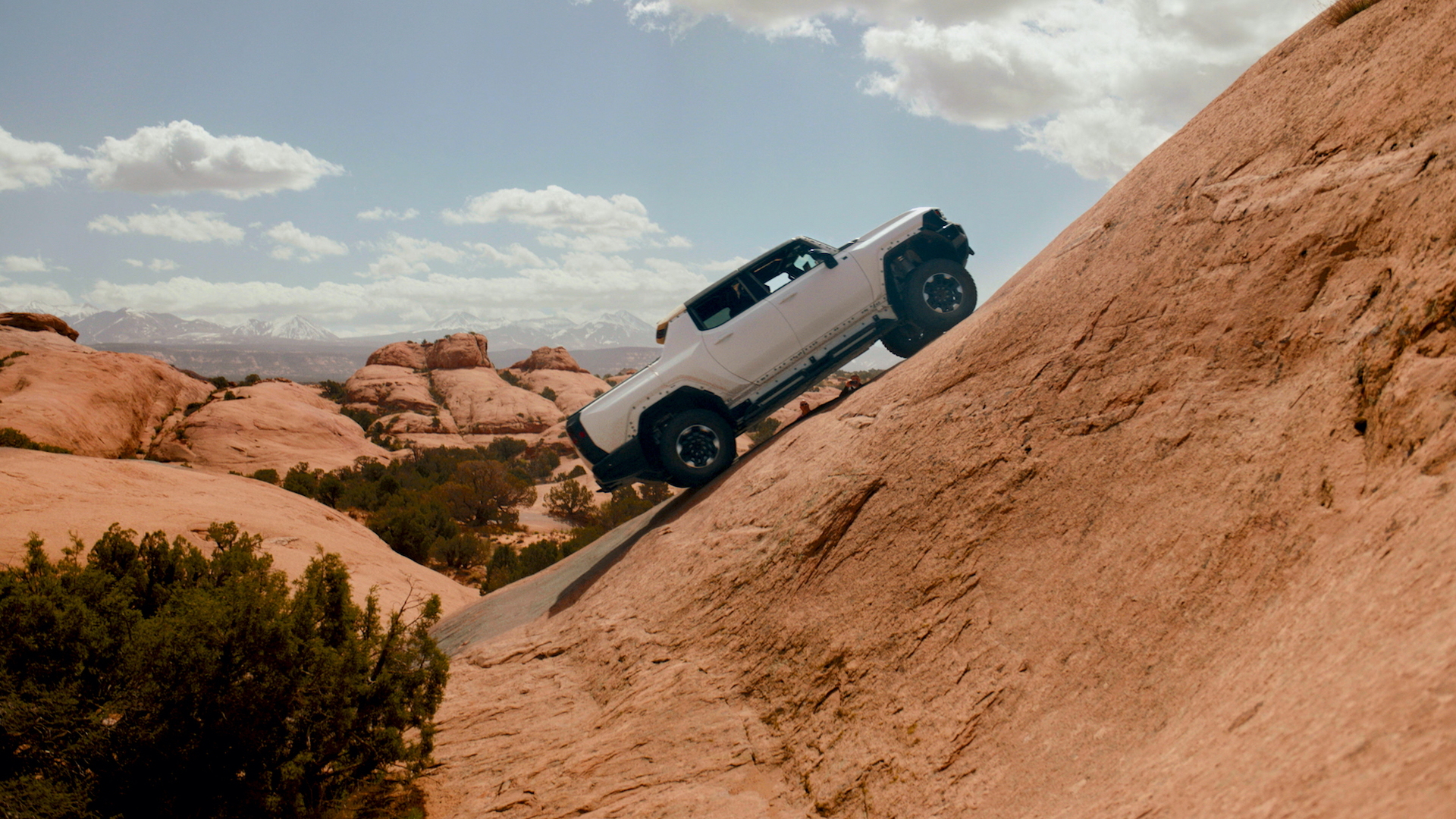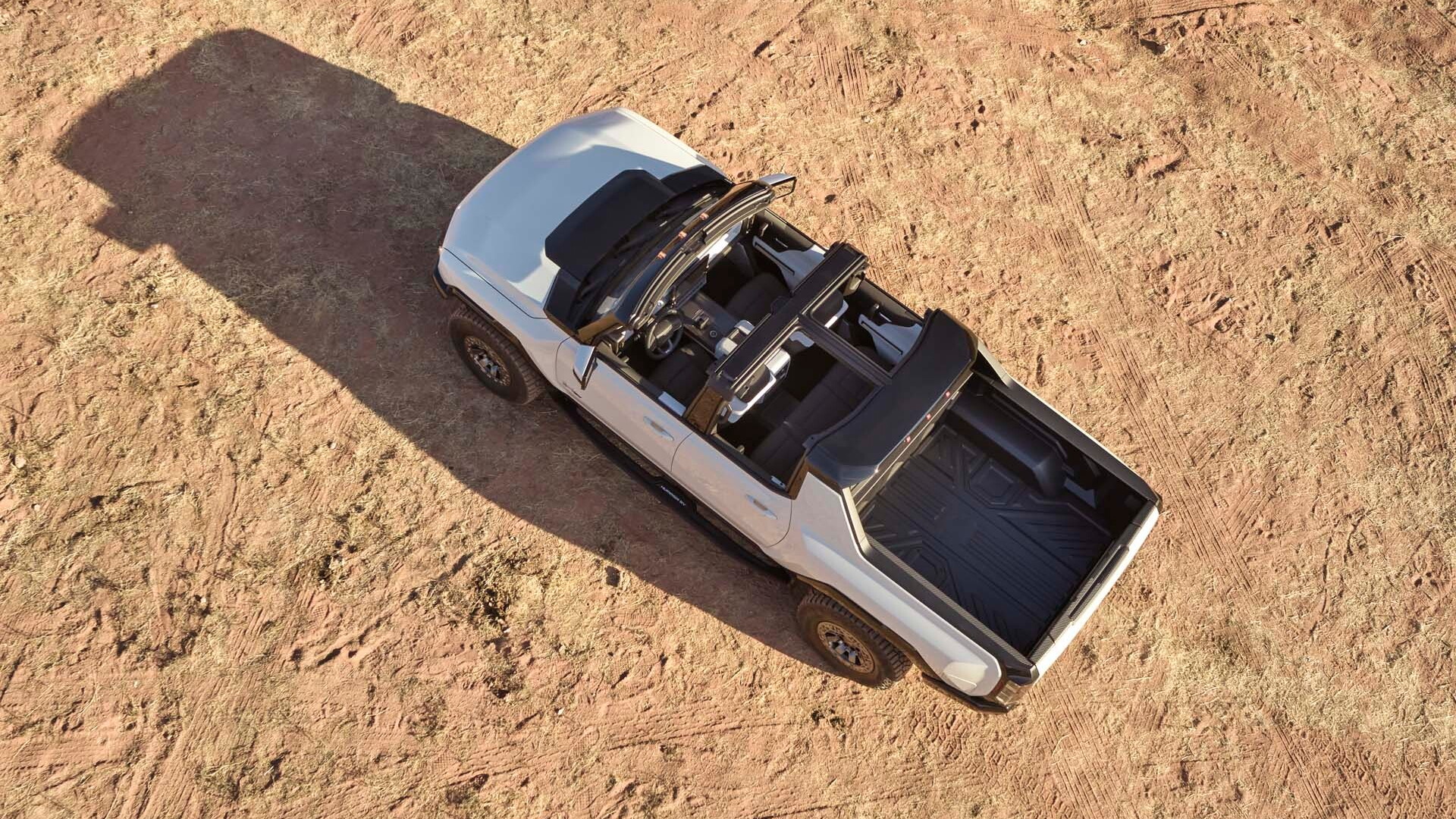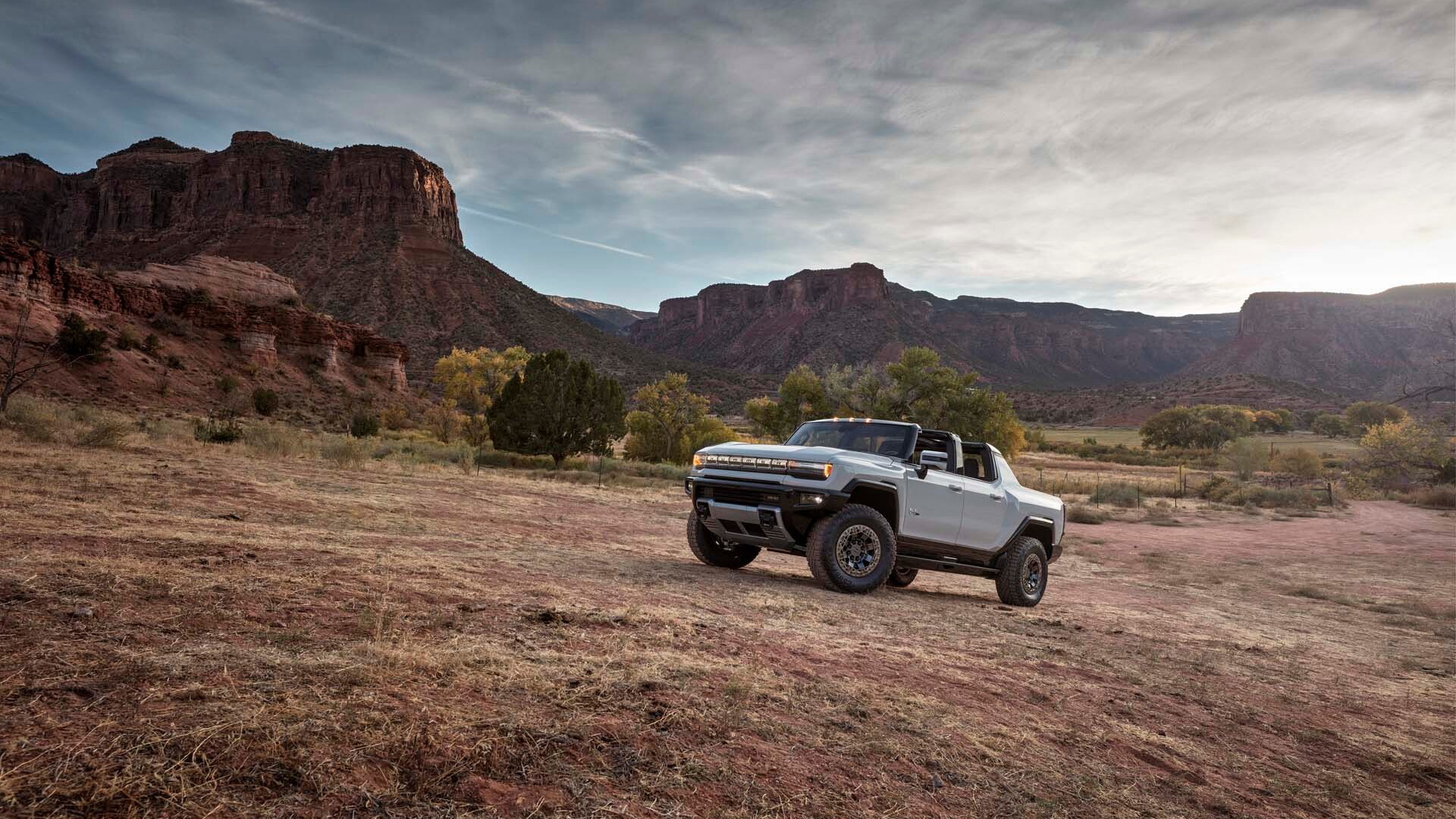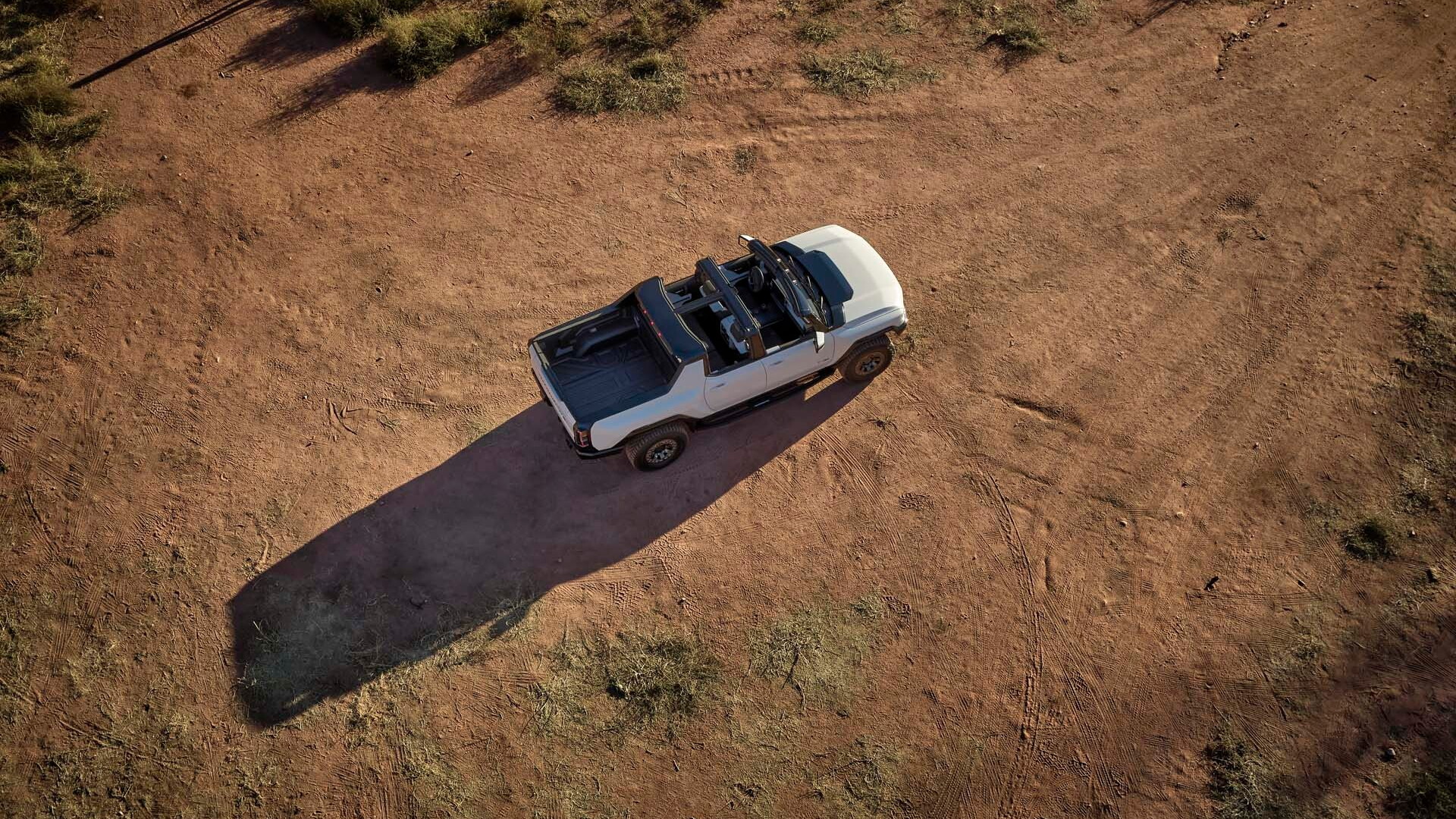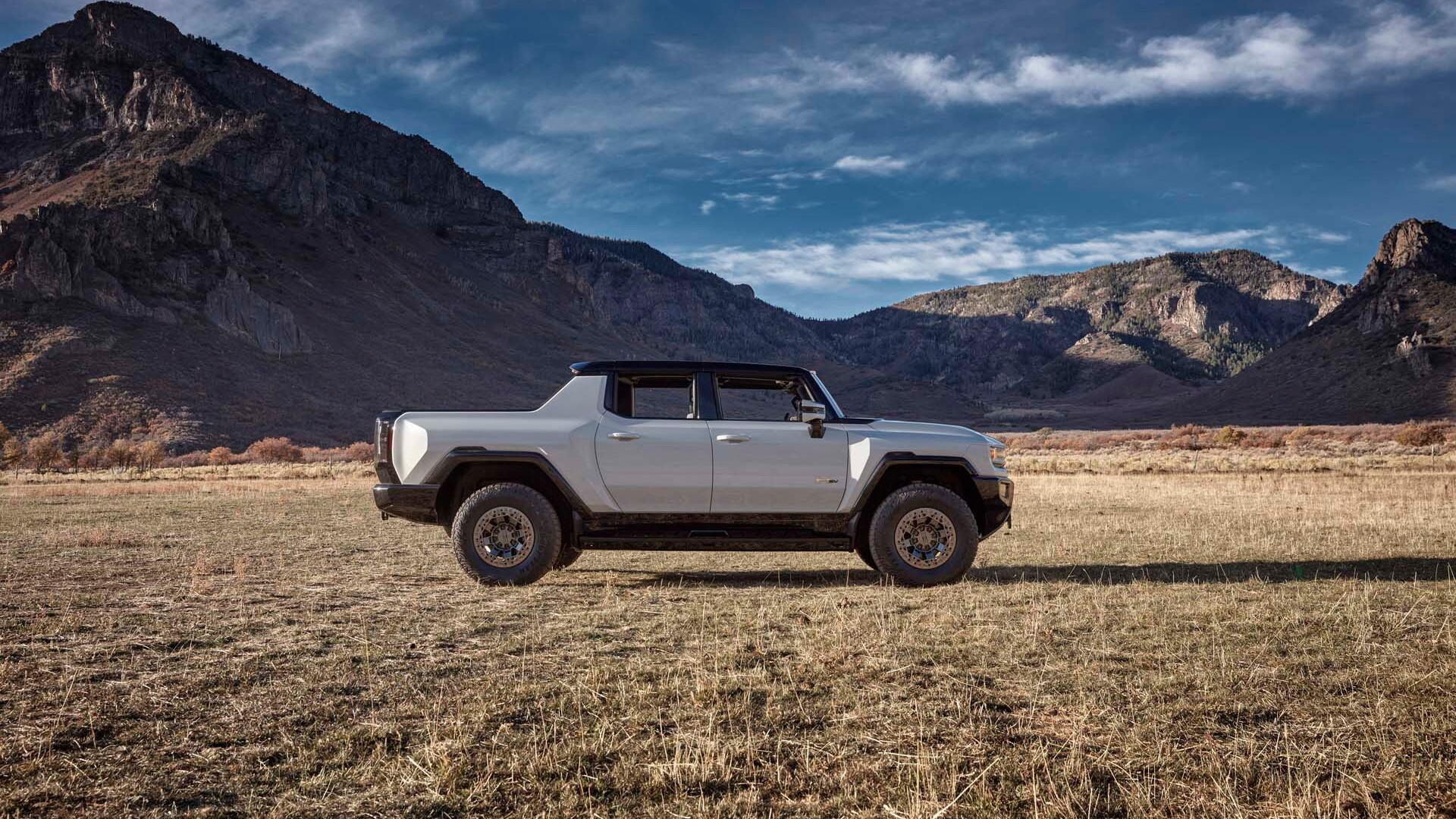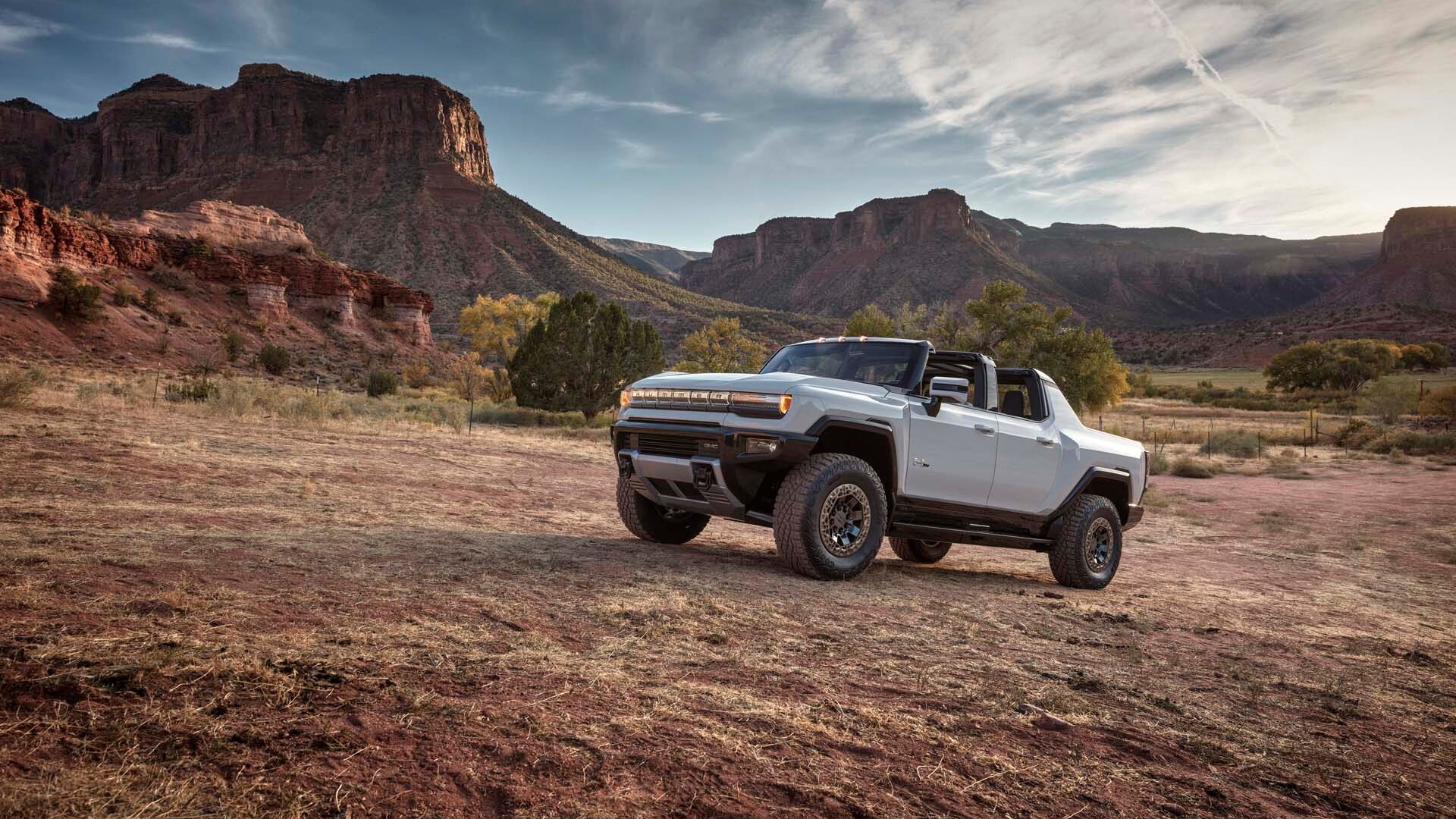The 2022 GMC Hummer EV aims for impressive off-road capability, so General Motors sent prototypes to the legendary trails around Moab, Utah to show off some of that capability. In a press release and short video, GMC explained some of the tech features of the electric Hummer, and provided a few more specifications.
What it amounts to is a trail-focused toolset you won't find in any current truck, electric or not.
The Hummer EV's Drive Mode Control system will feature a Terrain Mode, which will allow drivers to select two-pedal or one-pedal driving.
Most EVs offer one-pedal driving, which allows the driver to rely on regenerative braking to slow the vehicle without touching the brake pedal. But GMC claims its version is specifically calibrated for off-roading, allowing drivers to negotiate steep grades and other difficult terrain without having to manage the accelerator and brake together.
GMC mentioned Extract Mode at the Hummer EV's unveiling last year, but provides a bit more detail here. This mode raises the air suspension approximately 6.0 inches to help clear obstacles or ford water, according to GMC. It's also the most aggressive of the off-road drive modes.
Extract Mode increases maximum ground clearance to 15.9 inches—5.8 inches more than the standard setting. It also enables a 49.7-degree approach angle, 38.4-degree departure angle, and 32.2-degree breakover angle, per GMC. The automaker also claims the Hummer EV can drive through water up to 32 inches deep in Extract Mode.
The Hummer EV will also have a trip-planner interface that can account for range and charging needs even when the route includes a mix of on-road and off-road driving.
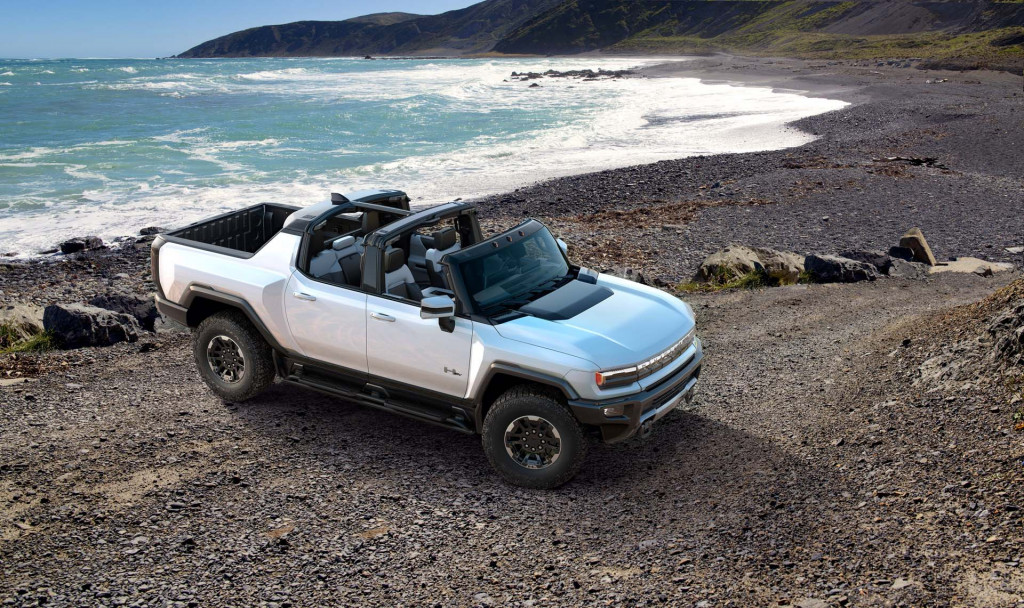
2022 GMC Hummer EV
GMC's first EV will arrive as the Hummer EV SUT Edition 1 later this year (as a 2022 model), with a claimed 1,000 horsepower, 350-mile range, and a $112,595 base price (including destination). Then the 2024 GMC Hummer EV SUV arrives in calendar-year 2023.
A related Chevrolet Silverado EV pickup will be more affordable and focused more on fleet and commercial customers—and likely less on recreational off-roading.
